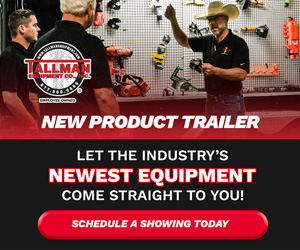Sometimes safety isn’t all that it seems
There are striking similarities in how we respond to incidents, injuries and fatalities in our industry. Safety stand-downs are held. Utilities and contractors conduct incident investigations that are typically wrapped up with action items that need to be handled.
But consider this: Is everything we do in the wake of an incident truly effective in preventing future incidents? Let’s take it one step further. Are all the things we’re doing on a daily basis helping to ensure employee safety, or do we sometimes simply check a box, satisfy a requirement and tell ourselves we’re making the job safer for our workers?
My objective in writing this article is to take a hard look at some of the tactics we are currently using in the name of safety. I will occasionally use or allude to the phrase “imagined reality”; this is not intended to be flippant or sarcastic. The truth of our human existence is that we create our own reality and then build systems around it. Take religion, for example. There are different religions whose followers have different beliefs and worship in different buildings – yet we can put a rover on Mars when we all work together regardless of our differences.
In the utility industry, we sometimes create an imagined reality of safety by doing certain things that we believe will make our workforce safer – but do they actually work? And if they’re not working, what can we do as an industry to improve? Think about this: The continued occurrences of serious injuries and fatalities tell us something. Even with the best training and the latest new safety initiatives, we have been unable to outsmart human fallibility. The smartest people in safety with the highest degrees in the land have been unable to save the last lineworker who was killed on the job. So, if we want to continue progressing in terms of safety in our workplaces, we may need to try some new tactics.
In the remainder of this article, we’re going to look at four different items – the safety stand-down, the safety moment, the job briefing and leadership style – to gauge their effectiveness and discuss what we can do to make them more impactful for the workforce.
1. The Safety Stand-Down
I have been involved with many safety stand-downs as a lineman, manager and safety director. In my experience, the safety stand-down has become a standard action item when an incident or near-miss is serious enough to warrant a temporary job shutdown. During a stand-down, there are often speakers and a document that is presented to workers, with the event typically taking place in a classroom, at a show-up site or on the job site.
The information provided at the stand-down is usually relevant, timely and accurate. But what impact does it have on the workforce? If we model a narrative of talking to or at a group of workers and there is little to no interaction, it is unlikely that the information will be impactful or lasting for the workers. Of course, there’s no doubt that during some safety stand-downs, there is a skilled presenter who engages and involves the audience, prompting deep thought and contemplation of what could have been done to avoid the incident altogether. The reality is that a stand-down is only as good as its presenter.
When assessing the effectiveness of a safety stand-down, ask yourself, what will change tomorrow because of the stand-down today? When a stand-down is put together by management for their workers, the result is often a stand-down about what management thinks is necessary to present in order to prevent recurrence. But a stand-down should be negotiated with the crew that experienced the event, and their input – along with the input of other crews – is critically necessary if we want an impact to be made. Otherwise, the stand-down is a check-the-box event so that crews can eventually get back to work; it is a means to satisfy a requirement.
A stand-down presented only by management is also the kind of event that can potentially erode trust between workers and management. Education is supposed to be focused on students. Similarly, medicine should be patient centered. So, why does much of safety seem to be generated more by management than workers? When an initiative originates in management with no worker input, the worker is not a partner in the process. And if you are currently managing safety without partnering with your workforce on initiatives, there’s a good chance that what you are doing isn’t going to resonate with your workforce.
2. The Safety Moment
At one point in my career, I ran a small satellite garage for an electric utility. The company broadcasted a safety message at the same time every workday. Sometimes I would be in the middle of a task, such as establishing a clearance for an outage over the radio, and everything would have to stop so we could listen to the safety message.
One year, I did a small anecdotal study….







0 Comments